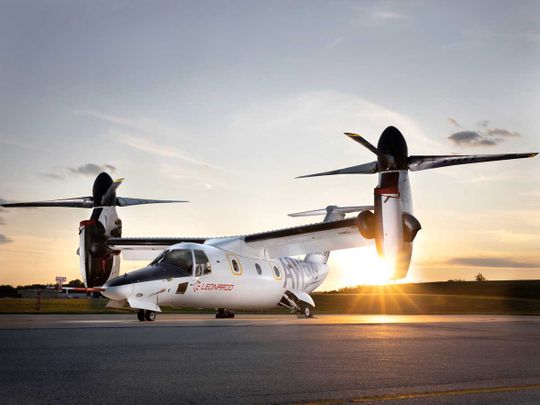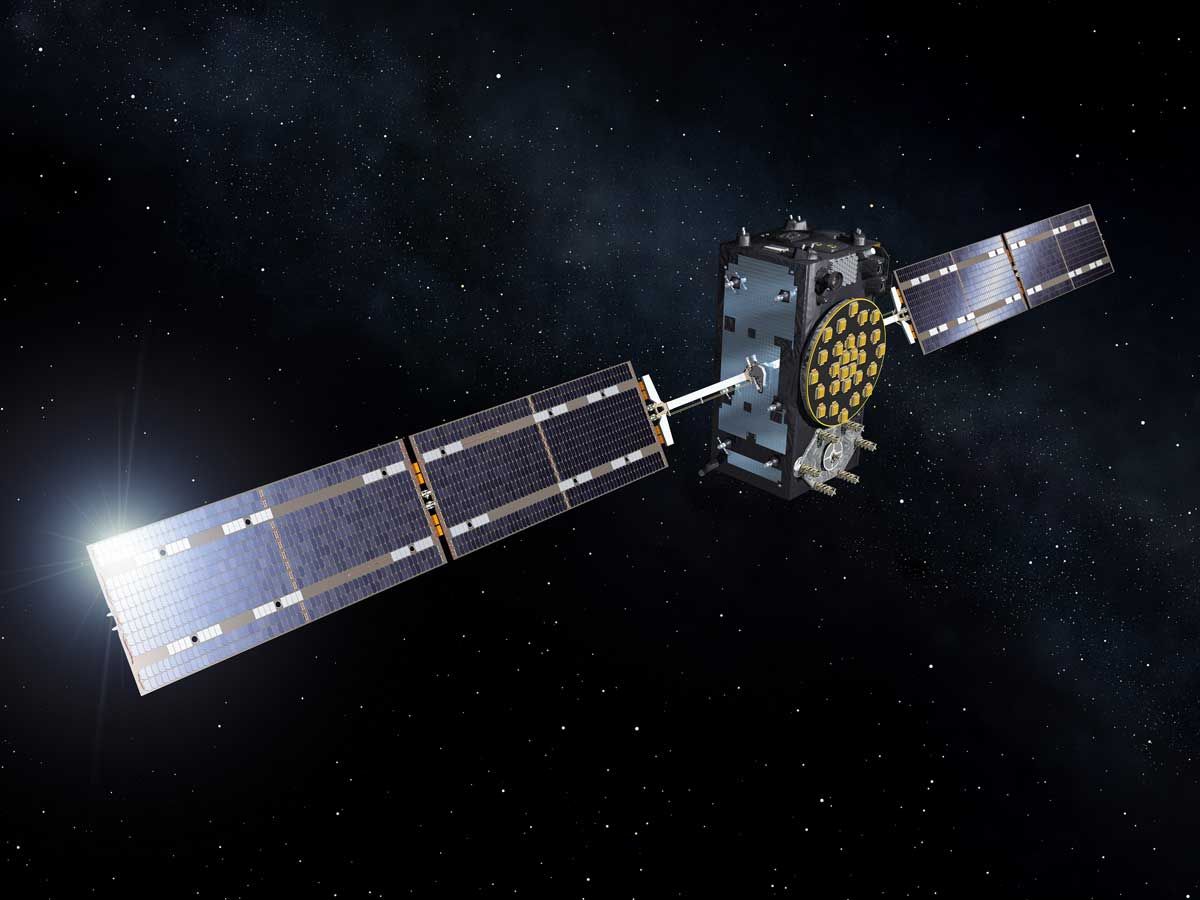
The countdown for Expo 2020 has begun and with Dubai Airshow taking place this week, the UAE is the window of innovation and new technologies, in many different sectors, bolstering the “Connecting Minds, Creating the Future” Expo mantra.
This holistic approach to innovation and knowledge will be the basis of aerospace and defence company Leonardo’s contribution to the Italian Pavilion, which will be located between the “Opportunity” and “Sustainability” themed areas within Expo 2020.
Leonardo – headquartered in Italy and with a strong industrial presence also in the United Kingdom, the United States of America and Poland – ranks in the top 10 of aerospace and defence companies in the world and covers all the sectors spanning from helicopters to naval defence, from advanced training to space exploration. Some of these exciting products – from innovative aircraft, manned and unmanned, to the company’s expertise in space exploration – will be available to Expo visitors.
Revolutionary rotorcraft
On the first day of the Dubai Airshow, Leonardo and Falcon Aviation Services presented a revolutionary rotorcraft-dedicated terminal concept, in order to meet the growing demands for sustainable and vertical lift mobility and greater access to urban areas. The new rotorcraft terminal uniquely combines a helipad, a showroom and lounge areas in a single city-based heliport ideally supporting the development of a network of point-to-point connections for both urban transfers and connections between cities. VIP and charter services users and passengers will be provided with levels of service typically available only in larger private airport facilities, which are far from downtown and urban areas. The rotorcraft terminal features strong environmentally friendly design and modularity using recyclable materials and, if required, it can be transported.

The company’s visionary approach to urban mobility will be represented by the first-ever civil tiltrotor: the AW609. This revolutionary vehicle combines vertical take-off and landing – like a normal helicopter – with the performances of a traditional aircraft, allowing it to fly above adverse weather conditions hosting comfortably up to nine people in a pressurised cabin. The AW609 excels at reaching people in hard-to-access areas including densely populated city centres, high mountains, coastlines, and islands; and low population regions where the nearest hospital is far away. With the AW609 Leonardo is opening up new possibilities for a wide range of missions including: search and rescue, VIP/corporate transport, emergency medical services, offshore transport, and homeland security.

Space expertise
Leonardo’s participation at the Italian Pavilion at Expo 2020 will also reflect the company’s expertise in space exploration as well as in land and water surveillance space systems. Among these, the atomic clock which beats time through the resonance frequency of an atom.
The hydrogen atomic clock (or the PHM - Passive Hydrogen Maser) is designed and manufactured by Leonardo and it is the most accurate clock ever made for satellite navigation applications. The clock accumulates an error of just one second every three million years. Two atomic clocks are installed on each of the European Global Navigation Satellite System (GNSS) Galileo satellites. In fact, because space and time are united in determining a geographical position - a better measurement of time equates to a more accurate location. Designed to operate in space for more than 12 years, the atomic clock offers greater precision than what is being currently offered by other available systems.

Specialised drill
A partner on the international Space Agencies’ most important programmes, Leonardo will bring to Expo 2020 the drill of the ExoMars2020 mission. The drill will look for signs of life on the Red Planet. The operational scenario of the ExoMars2020 mission involves the acquisition of Martian soil samples and their on-board analysis will see the usage of special spectroscopic techniques in both the visible and the infrared spectra.
On board the ExoMars Rover, the drill will look for traces of present or past life, digging down as far as 2 metres into the surface of the Red Planet. At this depth, in fact, biological activities are not destroyed by cosmic radiations, and it is therefore possible to find evidence of their existence. Leonardo is responsible for developing, manufacturing and integrating the tool which will collect these samples, the so-called “drill”. The drill will collect samples of material which will then be distributed to a designated container; they will then be conveyed into the Rover’s analytical laboratory, and sent to the specific scientific instruments for a detailed examination.

The ExoMars drill is a true technological marvel. Its power is just 80 watt (one fifth of the drills we use at home) and is designed to work in extreme conditions, at a temperature of 80 degrees below zero and a pressure of 5-10 millibar: working at 80RPM with a constant thrust equal to 40-50kg, it will drill through the soil with a polycrystalline diamond bit, making a hole 25 millimetre across.




